Create Physical Therapy website easily.
Launch Physical Therapy website for yourself or your client easily by using the resources given below. You can also order a readymade Physical Therapy website.
Physical Therapy WordPress Themes
Here are some of the best WordPress themes for Physical Therapy website.
-

Accu – Healthcare, Massage WordPress Theme
$59.00 Demo & DownloadAccu is a contemporary WordPress theme designed for healthcare professionals, massage centers, rehabilitation centers, and alternative medicine practitioners. The theme is suitable for acupuncturists and traditional healers, as well as yoga center ... More Details
-

Chiropracto – Physical Therapy WordPress Theme
$59.00 Demo & DownloadAre you a chiropractor or physical therapist looking for a website that will showcase your services and attract new clients? Look no further than the Chiropractor – Physical Therapy WordPress theme! This theme is specifically designed for th ... More Details
-
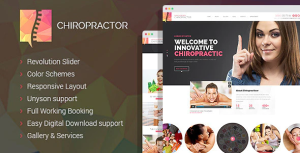
Chiropractor – Therapy and Rehabilitation WordPess Theme
$59.00 Demo & DownloadThe Chiropractor – Therapy and Rehabilitation WordPress Theme is a modern and carefully crafted theme designed specifically for rehabilitation centers, manual therapists, chiropractors, health and wellness clinics, and other similar business ... More Details
-
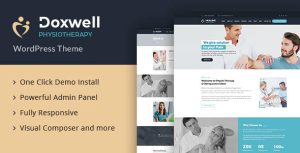
Doxwell : Physical Therapy WordPress Theme
$59.00 Demo & DownloadDoxwell is a WordPress theme designed specifically for physical therapy and medical-related services such as rehabilitation centers, therapy clinics, chiropractors, physiotherapists, massage centers, and wellness clinics. With its 100% responsive ... More Details
-

Inotura – Health & Medical WordPress Theme
$59.00 Demo & DownloadInotura is a WordPress theme designed for health and medical-related websites. It is a fully responsive theme that is optimized for speed and SEO. The theme offers a modern and professional design that is suitable for a variety of healthcare-relat ... More Details
-
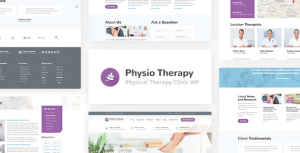
Physio – Physical Therapy & Medical Clinic WP Theme
$59.00 Demo & DownloadPhysio is a WordPress theme designed for physical therapy and medical clinics. It offers a range of features to help these businesses create an effective online presence.
Features
- Responsive design: Physio is designed to ... More Details
-
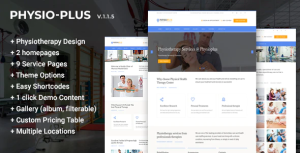
Physio Plus – Physiotherapy & Physical Therapy WordPress Theme
$59.00 Demo & DownloadPhysio Plus is a WordPress theme designed for physiotherapy and physical therapy clinics. It provides a professional and modern design that is easy to customize and use.
Features
- Responsive design: Physio Plus is fully r ... More Details
-
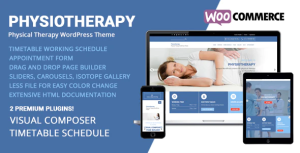
Physiotherapy – Physical Therapy WordPress Theme
$59.00 Demo & DownloadPhysiotherapy is a niche WordPress theme designed for physical therapists, rehabilitation centers, chiropractors, sports medicine clinics, injury prevention, acupuncture, geriatric care, and other medical-related services. It offers a range of hel ... More Details
-

Psychiatrist – WordPress Theme
$59.00 Demo & DownloadPsychiatrist is a WordPress business theme designed for building websites in the psychiatry, psychology, and therapist company niches. It comes with advanced features that make it a great choice for any kind of therapist type business.
F ... More Details
-
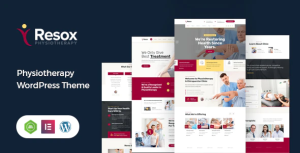
Resox – Physiotherapy WordPress Theme
$59.00 Demo & DownloadResox is a responsive WordPress theme designed specifically for physiotherapists, chiropractors, and other healthcare professionals. This theme is built to be clean and modern, with an emphasis on organization and ease of use.
FeaturesMore Details
-
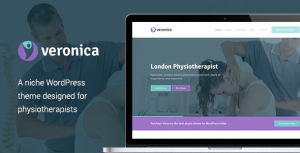
Veronica – Physiotherapy, Medical WordPress Theme
$59.00 Demo & DownloadOverview
Veronica is a modern and clean WordPress theme that has been designed specifically for physiotherapists and other medical-related industries. It is a niche theme that allows you to create a professional, modern, and fully re ... More Details
-
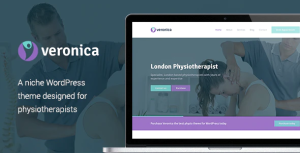
Veronica – Physiotherapy, Medical WordPress Theme
$59.00 Demo & DownloadVeronica is a modern and clean WordPress theme that has been designed specifically for physiotherapy and other medical-related websites. With its professional and fully responsive design, creating a website for physiotherapists has never been easi ... More Details
Physical Therapy Site Templates
Here are some of the best website templates for Physical Therapy website.

Healing : Physical Therapy HTML Template

Medicap – Medical Health & Pregnancy Care Clinic HTML Template

Fovia – Medical Doctor & Healthcare Clinic HTML Template

Psychology, Counseling & Medical Website Template — MentalPress

Vuci – Angular 10+ Doctor & Medical Template

Klev – Dental & Medical HTML Template

Brooks – Plastic Surgery Clinic HTML Template

Medviz – Health & Medical template

Chiro – Chiropractor and Rehabilitation HTML Template

Chiropracto – Physical Therapy HTML Template

Jian – Physical Therapy & Rehabilitation HTML Template
Interested in more details? You can find it below.
Physical Therapy Website Template: Efficient Design for Your Practice
In the world of physical therapy, having a professional and well-designed website is crucial for attracting patients and showcasing your services. With a plethora of website templates available, it can be challenging to find the perfect one that suits your physical therapy practice. In this article, we will discuss some key features to look for in a physical therapy website template and provide some top recommendations to make your search easier.
Firstly, it’s important to choose a template that is specifically designed for physical therapy practices. These templates cater to the unique needs of the industry, highlighting essential elements such as service offerings, appointment scheduling, and patient testimonials. Additionally, a responsive and mobile-friendly design is crucial, ensuring that your website looks great on various devices, from desktops to smartphones.
While there are many premium options available, you can also find free templates to suit your budget. Invest time in customizing your chosen template to best represent your practice, highlighting your expertise and creating an inviting online presence for potential patients.
Understanding Physical Therapy Website Templates
Physical therapy website templates play a crucial role in helping professionals showcase their services to potential clients. With the right template, a well-designed website can effectively convey important information about the practice, such as the services offered, appointment scheduling details, and testimonials from satisfied patients.
Several Physical Therapy Website Themes and Templates are available online, making it easy for therapists to find a design that suits their needs. These templates cater to various therapy niches, such as chiropractic, sports therapy, and massage services. A reliable website template should also be responsive and mobile-friendly, ensuring that it looks great on different devices.
When choosing a physical therapy website template, it’s essential to consider the overall functionality and design. Most templates are compatible with popular content management systems like WordPress, which means that a suitable WordPress theme can effectively enhance a website’s performance and user experience. This ensures that both current and prospective patients can easily navigate the site and access the essential information they need.
Lastly, it’s important to choose a software version that is up to date with the latest web design trends and security updates. Doing so will not only improve the website’s performance but also ensure that it remains secure from potential threats.
In summary, understanding physical therapy website templates involves considering the design, functionality, compatibility with content management systems, and software versions. By selecting the right template, therapists can create an attractive and user-friendly website that effectively showcases their practice to potential patients.
Key Components of a Good Template
When creating a physical therapy website template, there are several key components we must incorporate to make it user-friendly, visually appealing, and functional. In this section, we will discuss these essential elements and some possible options to consider.
A fundamental aspect of a good template is having a clear and intuitive navigation menu. This ensures users can move easily between pages featuring different services we offer, such as rehabilitation centers, physiotherapy, and massage therapy. The simple-to-use navigation menu should also include a visible contact form to make it easy and straightforward for potential clients to get in touch with us.
Another essential component is an attractive and engaging homepage layout, ideally featuring a customizable slider that can highlight our important features or on-sale services. A responsive design is crucial to cater to users on different devices, and we can achieve that with templates such as Physio and Physiotherapy.
We also want to showcase our services and expertise in an organized format. A well-designed template should provide space to clearly outline our services—specifically the benefits these services can provide to clients. Meanwhile, it may be useful to incorporate toggler buttons that allow users to expand or collapse information sections, facilitating easier reading.
In order to build trust and credibility with potential clients, testimonials are often an effective strategy. High-quality templates like the ones mentioned earlier should include dedicated sections to display reviews from satisfied customers, along with options to customize their appearance.
Integrating Google Maps on our contact page offers a helpful visual aid to clients searching for our physical location. A responsive and customizable template should allow for easy integration with Google Maps, thereby enhancing user experience.
Lastly, clear call-to-action (CTA) buttons throughout the website are key to directing users towards the desired action, whether that’s booking a consultation, signing up for a newsletter, or getting in touch with us. Eye-catching and strategically placed CTAs can increase user engagement and conversion rates on our website.
By considering these key components, we can create a highly functional and visually appealing physical therapy website template that caters to our target audience and effectively markets our services.
Design Features for Physical Therapy Websites
When designing a physical therapy website, it is essential to utilize certain design features that cater to your audience’s needs. We recommend including a clear, easy-to-use drop-down menu for navigation. This allows patients and visitors to quickly find the information they need. In addition, implementing hover effects for menu items can improve user experience, making it more interactive and audience-friendly.
Choosing the right color scheme for your website is crucial. Using neutral, soothing colors can create a calming atmosphere, reflecting the nature of physical therapy treatments. By selecting colors like blues, greens, and earth tones, you can create a relaxing, professional environment for your website visitors. Remember, the size of text and images is also important, making sure that content is easy to read while maintaining visual balance.
When it comes to functionality, don’t forget to incorporate modern design elements into your physical therapy website. For example, the Inoterior – Architecture & Interior Designer WordPress Theme offers a variety of impressive features like responsive layouts, retina display support, and custom typography options.
Another key aspect of website design is making sure that your website is compatible with various platforms and integrations. Themes such as the Dør – Modern Architecture and Interior Design Theme are compatible with Elementor, a popular page-building plugin. This ensures flexibility and adaptability.
Lastly, keep in mind that HTML5 templates, like the Archo – Architecture & Interior Design HTML Template, are a great option to achieve a modern, responsive design. This allows your website to adapt to various devices and screen sizes, ensuring a seamless user experience on smartphones, tablets, or desktop computers.
Boosting Online Presence through SEO
In the world of physical therapy, having an effective online presence is essential for attracting new clients and growing your practice. One way to achieve this is through Search Engine Optimization (SEO). We can begin by selecting a suitable physical therapy website template that is mobile-responsive and user-friendly.
SEO for physical therapists involves optimizing various aspects of your website, such as category and metadata. It’s essential to create categories for your services, such as “manual therapy” or “rehabilitation,” to help both clients and search engines understand your offerings. Including relevant keywords in your page titles, headings, and content can help improve visibility in search results.
Another important aspect of SEO is using filter and refinement options on your website. By allowing visitors to filter and refine their search, you can help them find the content they’re looking for more easily. This is particularly useful for large websites with diverse service offerings.
Keeping your website updated with fresh content can also improve your online presence. Regularly adding new articles, blog posts, or videos demonstrates your expertise in the field and keeps users engaged. Another tip is to utilize analytics-event tracking to monitor user behavior and identify areas for improvement on your site. This can help you optimize your digital marketing and attract more clients.
Widgets can be a valuable addition to your website’s SEO strategy, as they allow users to interact with your site and share content across various platforms. Integrations with social media sites, booking tools, or newsletter sign-up forms can encourage users to stay connected and engage with your brand.
To wrap up, remember that the key to boosting your online presence through SEO is providing valuable content, optimizing your website effectively, and ensuring a seamless user experience for potential clients. This approach can help you stand out in a competitive market and grow your physical therapy practice. HoneyBee – Free Beekeeping and Honey WordPress Theme could be a good starting point for creating a visually appealing and SEO-friendly website.
Choosing a Plugin for Your Website
When designing a physical therapy website, it’s essential to choose the right plugin to enhance functionality and improve the user experience. We recommend considering popular plugins such as WPBakery Page Builder and Elementor Page Builder, both providing powerful tools to create a professional-looking website.
With WPBakery, you can easily create custom layouts, add elements like buttons and accordions, and manipulate data attributes like Data-toggler-target and Data-toggler-expanded-aria-label. This plugin offers a user-friendly interface and a wide variety of elements to efficiently design your website.
On the other hand, Elementor Page Builder is a renowned plugin that allows you to build responsive websites with its intuitive drag-and-drop interface. Moreover, it includes ready-to-use templates and widgets tailored for the physical therapy niche. Elementor also lets you manage data attributes, making it simple to create interactive elements such as collapsible sections or toggles.
Both WPBakery and Elementor provide strong support and regular updates, ensuring that your website remains secure and compatible with the latest browser requirements. So, depending on the features you prioritize for your website, either of these plugins can prove to be an excellent choice.
Furthermore, when embedding files such as PDFs or Google Forms, remember to follow proper guidelines to maintain a consistent and professional look. You can learn how to add a PDF to Squarespace or embed a Google Form in Squarespace with step-by-step instructions available online.
In conclusion, selecting the right plugin for your physical therapy website is crucial for delivering a seamless browsing experience to your visitors. Both WPBakery and Elementor have their unique features and benefits, so make sure to choose the one that aligns best with your design vision and needs.
Rating and Reviews Management
In the world of physical therapy, it is vital to effectively manage ratings and testimonials from patients. Having strong online reviews can significantly increase the likelihood of attracting new patients to your physical therapy practice. A well-designed website template can help simplify this process by providing easy-to-use tools for collecting and displaying ratings and testimonials.
Collecting testimonials from satisfied patients is crucial in showcasing the quality of care provided by your physical therapy practice. Encourage patients to share their experiences through a user-friendly ratings system on your website. It is essential to respond to patient feedback, especially when addressing any concerns or negative reviews. This demonstrates your commitment to continuous improvement and building trust with potential patients.
Additionally, displaying ratings and testimonials on your website helps improve credibility and transparency, as potential patients can see a collection of real experiences from previous clients. For instance, a star rating system can visually display average scores from all patient reviews, giving potential patients an immediate understanding of your practice’s success.
In summary, incorporating a comprehensive rating and review management system into your physical therapy website template can play a significant role in attracting new clients and maintaining a strong reputation in the industry. By gathering and displaying testimonials and implementing a user-friendly rating system, your physical therapy practice will build trust and credibility with potential patients.
Client Management Techniques
In our physical therapy practice, we prioritize efficient client management techniques to ensure a smooth experience for our patients. One crucial aspect of this process is the appointment booking system. By utilizing an HVAC website theme that includes an intuitive appointment booking feature, patients can easily schedule their sessions online.
Additionally, we focus on effective appointment management, streamlining rescheduling, cancellations, and reminders. An integrated system helps maintain clear communication between patients and therapists, avoiding double-bookings and overlaps.
To further enhance our client management, we make use of a robust handyman WordPress template. This allows us to store patient information securely and manage their treatment plans efficiently. Through this system, our therapists can collaborate, track progress, and make informed decisions about the care provided to our patients.
In summary, when creating a physical therapy website template, it’s essential to include a seamless appointment booking and management system. By incorporating these features, we can provide exceptional care and service to our patients, ultimately leading to better treatment outcomes.
Physical Therapy Services Presentation
One of the essential aspects of promoting a physical therapy business is the presentation of services on the website. We believe that a well-designed website can attract new patients and retain existing ones by providing them with relevant information. When selecting a physical therapy website template, we should focus on showcasing our services in a clear, concise, and visually-appealing manner.
To create an effective physical therapy services presentation, we should first list all of our services and categorize them accordingly. For example, we can have categories like sports injury rehabilitation, pediatric physical therapy, and post-surgical recovery. Our services page layout must be easy to navigate, helping patients find the information they need quickly.
When presenting our services, it’s crucial to give essential information, such as the goals of each therapy, the therapeutic methods used, and the possible outcomes. Incorporating images and video content can also be beneficial to provide patients with a more comprehensive understanding of what to expect during their sessions.
Since pricing is a significant factor for many patients, we should also include a table listing our service prices. This will help potential patients plan and budget for their physical therapy needs accordingly. Adding information about insurance coverage and payment options is equally important.
It is essential to keep our services page updated with any recent changes or offerings. Regular updates will keep current and prospective patients informed. For instance, if we host events such as workshops and training sessions, we should highlight them in our presentation and include information such as event dates, venue, and registration details.
Lastly, to showcase the quality of our services, we can include testimonials from satisfied clients and list any awards or certifications our clinic has received. This will help build trust and credibility with our audience.
By creating a comprehensive, visually-engaging, and informative physical therapy services presentation, we can effectively showcase our expertise, increase sales, and expand our clientele base, ultimately contributing to the success of our business.
Customization and Support
When it comes to creating a physical therapy website, customization and support are essential. Choosing the right template and working with a dedicated support team can make the process smoother and more enjoyable. In this section, we will discuss the importance of customization and support in designing a physical therapy website.
One key aspect of customization is the use of website builders like Elementor, which allows you to easily create and modify your website’s layout. Elementor offers a variety of custom widgets that can be tailored to fit your specific needs. By utilizing these tools, you can create a unique and engaging website that represents your physical therapy practice.
In addition to powerful website builders, it’s essential to have access to a skilled team of developers who can assist with customizing your website even further. Developers can implement advanced features and make sure that your website aligns with your brand and services, ensuring that it stands out from the competition.
Lastly, a robust support team is crucial for maintaining your website and addressing any technical issues that may arise. They can assist with tasks such as creating new subpages and troubleshooting any problems that you may encounter. Having a reliable support team can save you valuable time and resources, allowing you to focus on providing excellent physical therapy services to your patients.
In summary, customization and support are critical components in creating a successful physical therapy website. By using tools like Elementor, collaborating with talented developers, and receiving assistance from a dedicated support team, you can ensure a sleek and efficient website that showcases your expertise in the field.
Frequently Asked Questions
What are the best free physical therapy website templates?
There are plenty of free physical therapy website templates available online. Physical Therapy – Free Bootstrap Fitness Template offers a sophisticated design with essential functions and amenities, making it one of the top choices for physiotherapy websites.
Which website builders offer physiotherapy templates?
Numerous website builders provide physiotherapy templates. Some popular options include WordPress, Wix, and Squarespace. All of these platforms provide various customizable templates, including designs tailored for physical therapy businesses.
How to choose the right design for a physiotherapy website?
When selecting a design for your physiotherapy website, consider the following factors:
- Ensure the template is responsive and mobile-friendly, as more patients are now accessing websites on their smartphones.
- Look for a clean and professional design that suits the nature of your business.
- Choose a template that is easy to navigate and provides a clear layout for information and services offered.
- Select a design that is engaging yet easy to customize, to make it unique for your brand and services.
What are essential features for a physical therapy site?
A physical therapy website must include the following essential features:
- Clear and comprehensive information about the services offered.
- Treatment options and in-depth explanations of the therapies used.
- About Us section detailing the background of the therapists and staff.
- Contact information and a booking system to schedule appointments.
- Testimonials from past patients to demonstrate the effectiveness of your treatments.
How to optimize a physical therapy website for better online presence?
To optimize your physical therapy website, focus on the following aspects:
- Use relevant keywords throughout the content, particularly in headings and subheadings, to improve search engine visibility.
- Create engaging, informative, and original content for your audience.
- Ensure the website is user-friendly with responsive design, optimized images, and fast page loading times.
- Include social media integration and share buttons to extend your online reach.
- Monitor and analyze website traffic using tools such as Google Analytics to identify areas for improvement.
How to customize a therapy website template to match my brand?
To customize a therapy website template for your brand, take the following steps:
- Incorporate your brand’s unique colors, typography, and logo throughout the design.
- Choose a template that offers multiple customization options, allowing you to tailor the layout and design elements according to your branding guidelines.
- Create custom graphics and visuals that resonate with your target audience and reflect the nature of your services.
- Add your brand’s voice and personality to the content, ensuring a consistent experience across all platforms and touchpoints.




